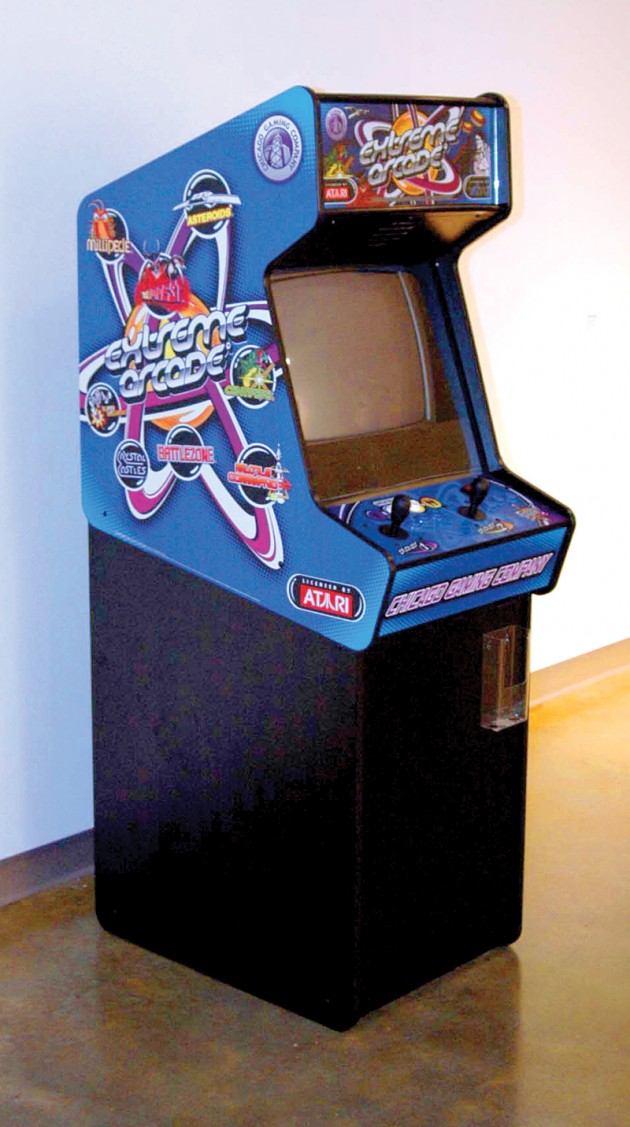Art gets a ‘1-up’

Though few may recognize it as such, electronic gaming is one of the world’s fastest-growing art forms. At every point of a video game’s creation there is an artist at work. Starting in the hands of the developer, then those of the game designer and eventually the consumer, a game is an interactive piece of art.
At the Centre Gallery in the Marshall Student Center, 8 Bit Series: Pixels and Power-ups takes a wide-angle look at every facet of video game art.
The Centre Gallery, which usually features artwork by only current students, has made a special exception for alumnus Deon Blackwell.
Blackwell graduated from USF last year with a master’s in fine arts and is an adjunct professor in ceramics. He received critical acclaim in 2007 for his show Body of Salt, an exhibit featuring carefully molded salt deposits at the Undercurrent Gallery in Miami.
Pixels and Power-ups is the second video game-related exhibit for Blackwell. In 2006, he premiered the series at the William and Nancy Oliver Gallery with 8-Bit is Legit. On his Web site, Blackwell writes that his work with video games is his way of taking the weight of the real world off his shoulders and reflecting on a simpler time in his life.
“Most of my other work is very serious in nature, so I wanted to make a show where the viewer and (I) could escape into a world that is somewhat familiar to their childhood,” he said. “The objects are symbols of a time when games were more about imagination and innocence and not about simulation of daily life in an interactive form.”
In accordance with the restrictive medium of 8-bit technology, many of the displays in Pixels and Power-ups make the most of simplistic materials. The artist’s recreation of Pac-Man foe “Blinky” is constructed from 170 wooden cubes glued together, and his homage to The Legend of Zelda’s hero Link is made entirely of Post-It notes.
“I used the Post-Its because they are basically large pixels — the individual squares of color that made up the images in the classic games that I represent,” Blackwell said.
Blackwell’s exhibit includes an interactive “pixel wall” covered with Post-It notes ready to be manipulated into 8-bit artwork.
Much of his work encourages interactivity, since video games are virtually inoperable without user input. Throughout the gallery are arcade cabinets and projectors for participants to play around with.
Above all, the goal of the exhibit and its reception Friday is to simulate Blackwell’s idea of an arcade and to allow everyone to take part in the experience.
“It should be a fun and interesting evening,” said Nick Mertens, Centre Gallery employee and senior art history major. “There’s going to be games, food and a live performance by N03D.”
N03D, which is Blackwell’s first name backwards in “leet speak,” a gaming language developed by players of the popular first-person-shooter game Counter Strike, is an 8-bit music project. N03D’s music samples sounds produced by Ataris, Nintendo Entertainment Systems and similar electronic devices to produce songs that give listeners a taste of 2D nostalgia. For those interested in making music reminiscent of their own NES days, N03D will be allowing audience members to take over the performance.
“I want (the reception) to be loud, with music and people having fun,” Blackwell said. “With many arcades dying due to home video game sales, I want to make games public again. Be ready for some trash-talking Smash Bros.-playing, some old school fans playing Pac-Man like you have never seen and yours truly dropping some blips and bleeps in weird patterns.”
Pixels and Power-ups will run through Oct. 3 in the Centre Gallery on the second floor of the Marshall Student Center. The reception is 7 p.m. to 10 p.m. Friday. More information on the Centre Gallery can be found at ctr.usf.edu/gallery. To view more of Blackwell’s works, visit blackwellart.com.






